- Cutaneous: Slow infection that results in nodules of various sizes.
- Diphtheric: Lesions in the digestive or respiratory tracts.
- Sepicemic: A severe infection that can cause death.
Galapagos Conservancy funded a research project to better understand and combat avian pox in March 2022. This study had two purposes: it was to determine the extent of avian disease in birds, specifically Finches, and assess the impact of this disease on Finches’ survival on Santa Cruz Island.
The study was conducted by Diana Loyola (a Galapagos Conservancy conservation grantee), Loyola’s team captured 3,108 birds from 11 species at 17 locations on Santa Cruz Island. There were many bird species that were captured, including nearly all the Finch species on the island. The Small Ground Finch (), which was the most infected, had the highest numbers.
Loyola and her colleagues calculated the prevalence of avian Pox over several months. Loyola and her team found a prevalence of avian pox of 7% in April and a prevalence rate of 6% in May and June. This does not mean that there is a significant variation in the infection rates. This confirms the findings of other studies (Jimenez -Uzcategui, 2007; Kleindorfer, & Dudaniec 2006), that fowl pox is possible in any season. The number of fowl-pox vectors (moths) that are present in warm weather can make it more difficult for birds to be affected and increase the risk of getting infected.
Avail pox was also assessed for its effect on survival. This required the difficult task of recapturing birds. Loyola states that there is no doubt that the virus has a negative effect on bird survival.
Apart from existing research on avian Pox, Dr. Jorge Carrion is the Conservation Director at Galapagos Conservancy with Conservando Galapagos. He said that this research is crucial for determining the conditions that favor the spread of the disease and recommending management strategies to stop it spreading.
The transmission of avian pox between birds can occur through skin contact and from bites by virus-infected mosquitoes. Transmission of disease is more likely during mosquito breeding season (Gerlach 1999). Galapagos Conservancy would like to congratulate Diana Loyola, her team and their hard work on the field. They also contributed in controlling avian pox. Dr. Carrion stated that “if we want to ensure our survival and the survival of all living things, we must be active in protecting our planet.”
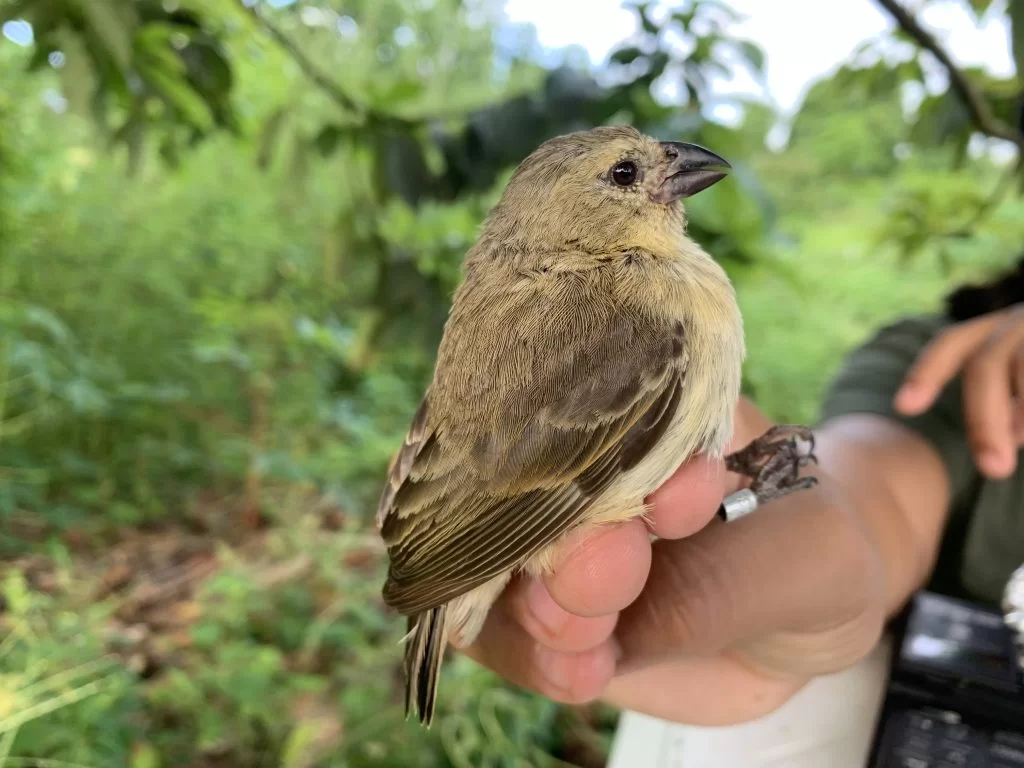
Monitoring of Avian Pox © Gabriela Loyola
Dr. Jorge Carrion is Director of Conservation for Galapagos Conservancy with Conservando Galapagos. He stated that while the species’ population has been negatively affected by the presence invasive species like guava or feral pigs but that the “expedition results have been positive and provide valuable data about the number of tortoises, the icons of Galapagos”, said that the expedition had provided useful information.
Washington Tapia is the General Director of Galapagos Conservancy. He also works with Conservando Galapagos. To determine the phylogenetic relationships between the various tortoise populations, blood samples were taken. Feces samples were also taken to examine their diet and contribution towards seed dispersal.
Galapagos Conservancy has a commitment to strengthening conservation efforts and protecting this species from invasive species. It is vital to conduct scientific expeditions to remote areas like Cerro Azul volcano in order to understand the status of Giant Tortoises’ population and ensure the conservation of this rare species.
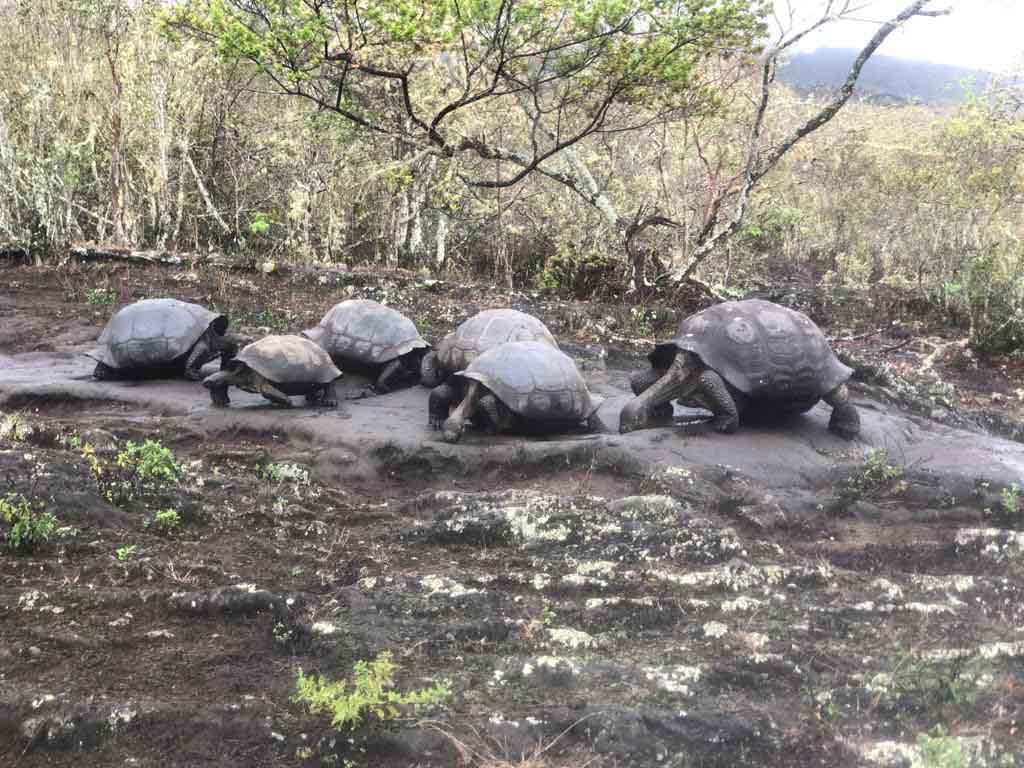
Group of Galápagos Giant Tortoises at Cerro Azul © Galápagos Conservancy
Galapagos Conservancy has supported this rescue network since March 2002. It promotes and supports conservation efforts on the Galapagos Islands. Dr. Jorge Carrion is the conservation director at Conservando Galapagos and a partner in Galapagos Conservancy. He stated that “we are proud of working hand-in-hand to the GNPD and we aspire permanently to the short term recovery and, if feasible, the reintroduction affected species into their natural environment.”
Galapagos Conservancy supported the purchase of veterinary medicine, medical supplies, and rescue equipment to aid in the rescue and recovery efforts for affected species. It was also possible to adapt the marine animal hospital facilities and the necropsy area for the deceased.
- In 2022, 163 animals were reported as being in apparent adverse circumstances (injured or sick, or dead).
- 73% of the animals (119 animals) were directly or indirectly affected.
- 48 animals were treated by the RRN. 22 of them were able to recover and were released.
Experts performed a post-mortem examination of 26 animals in order to determine the cause of death. They found that vehicle collisions and canine attacks were the most common causes for animal injuries due to human activity.
Carrion stated, “We thank our collaborators, lovers of Galapagos biodiversity. whose donations enable me to provide permanent assistance for injured or sick wildlife of Archipelago and to take other timely steps to preserve this legacy.”
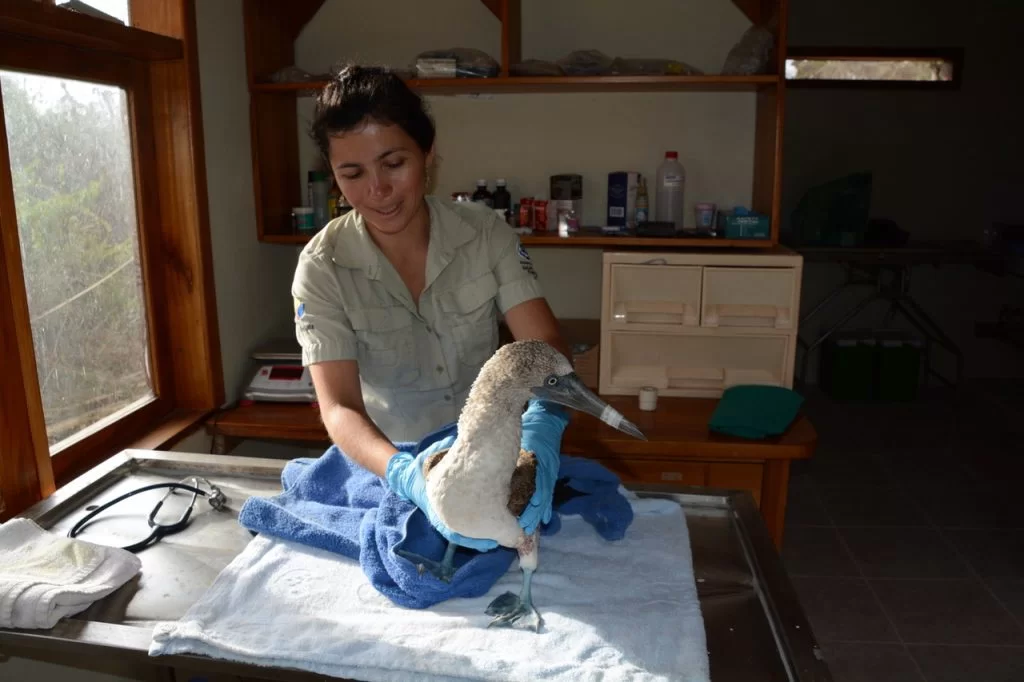
RRN staff treating a Blue Footed Booby © Galápagos National Park Directorate
Carolina’s educational program was launched on May 20,22. It is targeted at Santa Cruz Island girls aged 11 and 12. Many Galapagos women grew up believing that menstruation is associated with shame, limitation, or disease. Red Coral, a Campaign was created as part of the project with the help of experts from Red in Red Citizen’s Collective. This group of women is dedicated to education and menstrual health. The workshops offer detailed and precise information about managing menstruation.
Carolina spoke on the Galapagos Conservancy radio show. She stated that the initiative includes a sustainability component. This raises awareness about the fact that disposable menstrual pads and tampons are toxic to the environment. Reusable menstrual management products are very environmentally friendly and help women’s health.
This project will help girls to understand that menstruation does not have to be shameful.
Gabriela Vivas (Director of Operations at Galapagos Conservancy) commended Carolina’s initiative. She stated that stigmatization and taboos around menstruation have made it difficult for women to be educated, healthy, and happy. Menstrual education should be accessible to all.
Santa Cruz’s two public schools are involved in the project, which aims to reduce the stigma associated with menstruation. Around 200 people have benefited from the project, including 90 young girls and 13 teachers as well as their parents.
We hope to reach all Galapagos schools and colleges through this campaign, which aims to raise awareness about the importance of sustainable menstrual management products and biodegradable materials. Carolina stated, “I am passionately committed to helping our girls live their menarche naturally. This will allow them to explore this new phase in their lives with a more respectful perspective of their bodies.
Galapagos Conservancy commends Carolina for her efforts to address issues related to menstrual health from an environmental perspective. Carolina’s holistic approach prepares young girls for a new stage in their lives and examines the environmental impact of menstrual product.
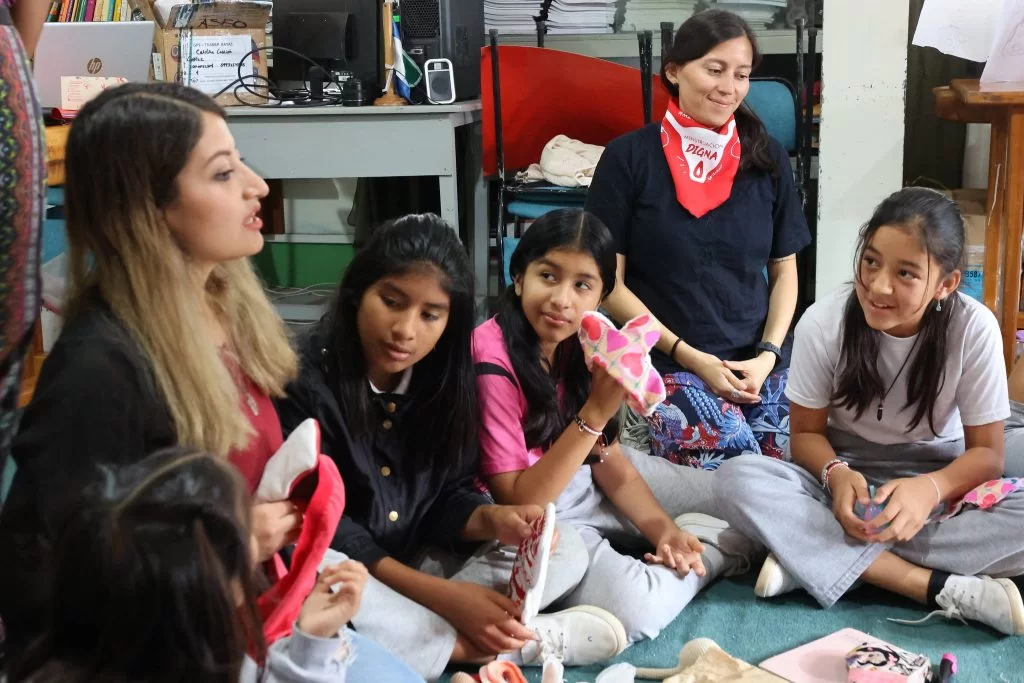
Carolina Carrión in a menstrual education workshop © Galápagos Conservancy
To hatch baby tortoises, the first breeding program used artisanal solar incubators made of wood and lined by cement. To maintain eggs at a constant temperature, electric hair dryers were connected to timers. Iniciativa Galapagos funded the modernization and expansion of Santa Cruz and Isabela’s Breeding Centers. This included a sophisticated automated incubator system that controls and regulates the temperature.
In 1970, the program’s first great success was when 20 of its first baby tortoises were born in captivity and released to Pinzon Island. Nearly 9,000 juvenile tortoises were released back to their islands of origin since then. Captive rearing is responsible for the survival of as many as a third all Galapagos Giant Tortoises today. Galapagos Conservancy, Conservando Galapagos and Conservando Galapagos have supported the Galapagos National Park in maintaining three breeding centers. There are many threats to Giant Tortoises and their numbers remain below 10%. We are thrilled to announce that the San Cristobal Breeding Center will reopen in 2023. Today, 2,200 more juvenile tortoises are being kept at the Breeding Centers. They will soon be released into nature, and there will be thousands more.
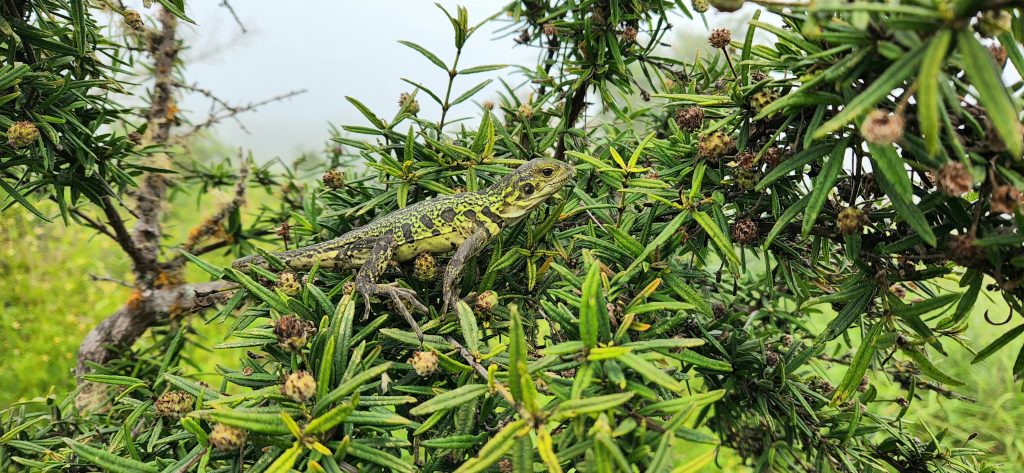
First-ever photos of juvenile Pink Iguanas showing characteristic striping © GNPD / Galápagos Conservancy
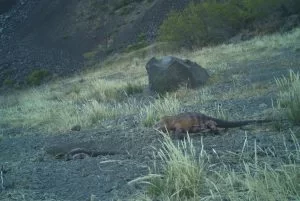
Photo of the first documented nesting site by Pink Iguanas © GNPD / Galápagos Conservancy
Since the “Galapagos Initiative” announced in October 2021 to bring together the efforts of the GNPD and the Galapagos Conservancy to help save the pink iguana, seven expeditions have been conducted to assess the current status and identify the threats facing the species; in recent months, the team documented nesting sites and detected active nests as well as hatchlings and juvenile iguanas of different ages.
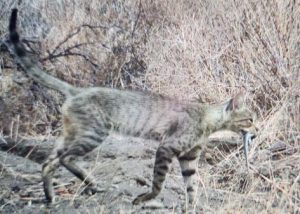
Non-native feral cats preying on Pink Iguana hatchlings. © GNPD / Galápagos Conservancy
Genetic analysis to confirm the identification of juvenile pink iguanas is ongoing, while camera traps deployed by the team throughout the volcano have documented ample evidence of pink iguana mating and nesting activity, and even potential competition with conspecifics with whom they share Wolf Volcano’s habitat.
At the same time, there is great concern about the abundant presence of feral cats in the iguana’s living and nesting areas, representing a serious threat to these reptiles in their most critical and vulnerable phase, being currently considered one of the main causes for the lack of documented recruitment in the pink iguana population.
The Galapagos Initiative is now urgently focused on providing greater facilities for monitoring, research and protection of the pink iguana nesting areas through the implementation of a permanent station, funded by the Galapagos Conservancy, on the summit of the volcano with 360 degree visibility.
Danny Rueda, Director of the Galapagos National Park, thanked the Galapagos Conservancy for their support and assured that “this remote base will facilitate the conservation and monitoring work on the volcano, especially to guarantee the conservation and restoration of the pink iguana population”.